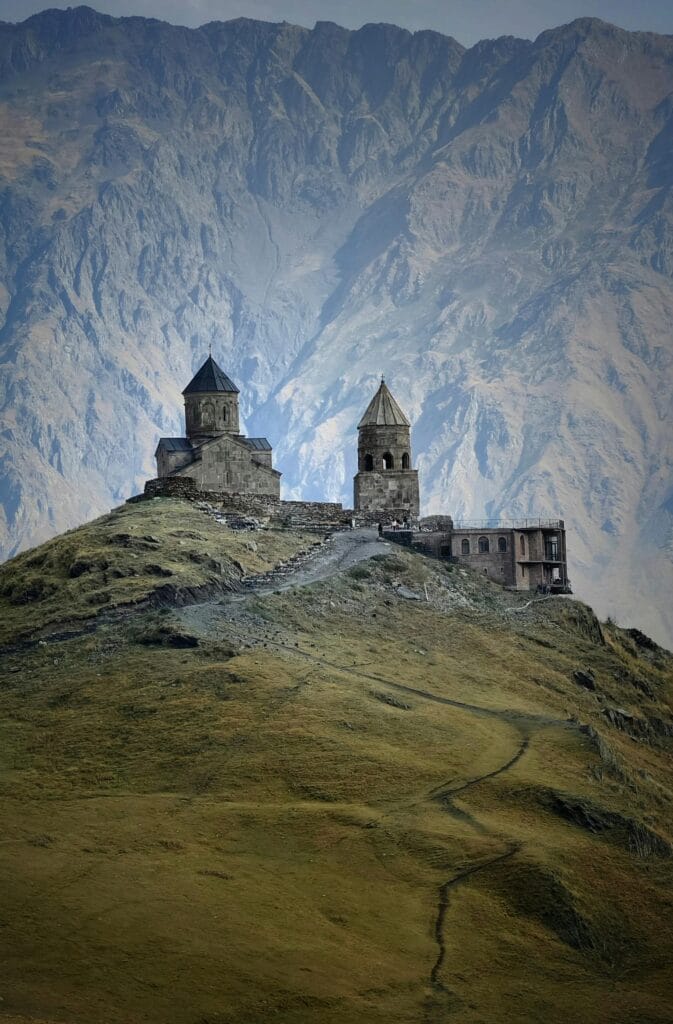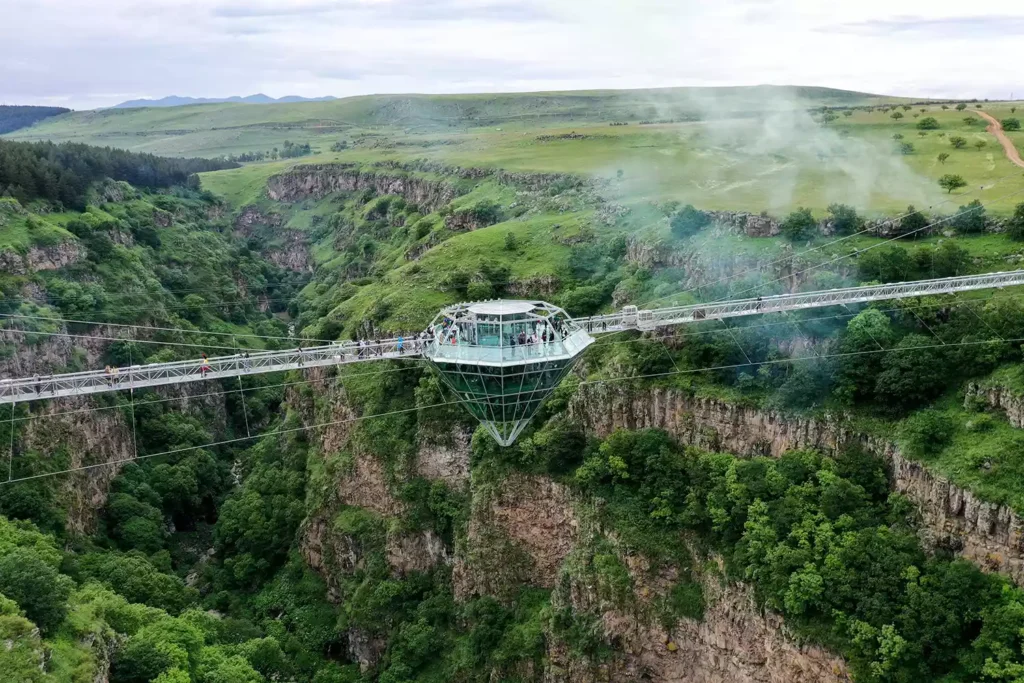DAY 01: Tbilisi Tour, Mtatsminda park
05:30 AM: Hotel transfer
11:00 AM: Leaving the hotel to the Chronicles of Georgia – Famous sculpture in suburban area of Tbilisi – overlooking a Tbilisi water reservoir (known as Tbilisi sea)
01:00 PM: Lunch
02:00 PM: Mtatsminda park, famous amusement park that overlooks the city Tbilisi. Breathtaking views city center
3:30 PM: You will explore city of Tbilisi and have local tour. You will explore Mekheti church and the monument to King Vakhtang Gorgasali, the legendary founder of Tbilisi. Walk down to the Rike Park and Cross the Peace Bridge. Take the cable car from Rike Park to Narikala Fortress to enjoy breathtaking panoramic view of the city and statue of Mother Georgia standing above the old Tbilisi. Walk down to the district of Sulphur baths passing by the only mosque in Tbilisi. Stroll through the Meidan Square area full of narrow streets with cozy cafés, wine tasting bars, souvenir shops, and breathe in the living past.
08:00 PM: Free time
DAY 02: Bodbe, Sighnaghi
09:00 AM: You will leave the hotel to visit Georgian style winery in Paterdzeuli.
12:00 PM: Your first stop will be in Bodbe monastery complex functioning as a nunnery since 1889, which according to the legend is a burial place of St. Nino, who converted Georgia to Christianity in the 4th century (you will spend about 40 minutes there)
01:30 PM: You will reach Sighnaghi, the city of love and the Royal Town, one of the crossroads of the Great Road surrounded by defensive walls with 23 towers. You will spend about 2 hour there (including lunch break) and continue your tour.
04:30 PM: You will continue to reach the best winery in town and one of the largest & ancient winery in the world
06:00 PM: Transfer to Tbilisi
08:00 PM: Free time
DAY 03: Tsalka, Dashbashi
09:00 AM: You will leave the hotel to reach Algeti protected areas and Algeti reservoir and spend 15 minutes there
11:30 AM: Tsalka. Here you will explore famous bridge. The Tsalka Diamond Shaped Bridge, located in Tsalka, Georgia, is an architectural marvel that spans the Khrami River. Its unique diamond shape and stunning design make it a captivating landmark, offering visitors a picturesque view and an unforgettable experience.
11:45 AM: You will reach village Dashbashi. You will spend there 30 minutes and afterward you will start hiking to Dashbashi canyons (Optional hike)
01:00 PM: You will reach amazing Dashbashi canyons and spend 1 hour there. Dashbashi canyons is one of the most impressive natural monuments of Georgia, green and beautiful whole year long.
02:00 PM: You will visit historical church at the edge of canyon in the village and from the church you will see breathtaking view of the road descending into the Ktsia gorge. You will spend there about 30 minutes. Afterward you will return in the village, explore places and have a rest.
04:00 PM: Transfer to Tbilisi
06:00 PM: Free time
DAY 04: Ananuri, Gudauri, Gevelti Waterfall & Kazbegi tour
09:00 AM: Leaving the hotel, we will take over the Georgian Military Highway up North, towards the border with Russia.
10:00 AM: You will reach Jhinvali Water reservoir created during the soviet era. You will spend 20 minutes there and promptly continuing your way to Ananuri complex, a former residence of Argveti Dukes.
11:30 AM: You will reach Ananuri complex. The complex features churches and towers dating back to the 16-17th centuries, beautifully overlooking the Jhinvali reservoir. Because of local uprising and clashes Ananuri was controlled by different Dukes. In the complex you will see two churches from 17th century. The older one was built in 1689 and has sophisticated ornaments of grapes and crosses symbolizing soul of Georgian culture. You will spend about 40 minutes there.
12:30 AM: Continue your drive to see the conjunction of two small mountain rivers famous for the fact that being different in color they still keep their own colors even after merge. Continuing on the way you will have a chance to taste the mineral mountain springs in Mleta.
01:00 PM: Pasanauri village: optional rafting activity
03:00 PM: Transfer to village Gveleti. you will hike the main path and visit Gveleti small waterfall. Taking pictures and going through the second train towards Gveleti big waterfall. After exploring small waterfall it’s time to reach big waterfall and take a rest, quick lunch.
07:30 PM: Transfer to Gudauri
07:45 PM: Free Time
DAY 05: Gregeti Trinity Church & Juta Lake
09:00 PM: After arriving to Kazbegi (Stepantsminda) we will have a hike to reach Gergeti Trinity Church (You can have a 4×4 ride to reach the church if you don’t want to hike)
09:30 AM: First Destination will be Juta. Change your vehicle to 4×4 vehicle which will bought you to the village of Juta. Upon arrival in the village of Juta, we will park the car, as the road is not accessible beyond this point. From there, we will embark on a scenic hiking tour, covering approximately 7 km to reach the charming 5th Season Camp. You’ll have plenty of time to relax and enjoy the stunning surroundings before we hike another 7 km back to the car. Afterward, we will transfer back to city, change vehicle again and transfer to Gudauri.
08:00 PM: Free time
DAY 06: Truso Valley
Truso Valley
09:00 AM: You will be already in a very special valley called Truso. We will drive to reach the hiking starting point. The Hike will be along the River Truso includes several villages near which offers some unforgettable panoramas, architect, culture and experience of tasting mineral waters.
1:00 PM: Village Ketrisi Zakagori old fortress You will reach small mineral lake in the middle of Turso valley and taste other minerals including salty waters nearby.
03:30 PM: We will drive over the Cross Pass and make short stop at the Soviet-era “People’s Friendship” mountain view point overlooking a deep gorge of Caucasus mountain range
05:30 PM: Transfer back to Tbilisi.
06:00 PM: Free time
DAY 07: Juvari Monastery, Gori, Uplistsikhe & Mtskheta
09:00 PM: You will reach Jvari Monastery (6th – 7th cc), the most important religious center and an architectural masterpiece of mediaeval Georgia. The Monastery stands on the rocky mountain top at the confluence of the Mtkvari and Aragvi rivers, overlooking the town of Mtskheta, which was formerly the capital of the Kingdom Iberia.
11:30 AM: Gori Fortress is a 13th century castle in Georgia, situated on a hill above the city of Gori in the Shida Kartli region of eastern Georgia. You will be able to see Joseph Stalin’s Museum complex consists of memorial house, where Stalin was born, exposition building with tower and Stalin’s personal coach with interior. In Gori, you will spend 3 hours
02:00 PM: After Exploring Gori, you will reach the oldest rock-hewn town Georgia, called – “Uplistsikhe” dates from the frist millennium BC. Built on a high rocky left bank of the Mtkvari River, it contains various structures dating from the Early Iron Age to the Late Middle Ages. The complex contains dozens of ancient artificial caves and holes. The latter were used for sacrificing animals during pagan time.
02:30 PM: Lunch
03:30 PM: Mtskheta tour, Passing through the famous souvenir market, Continue tour to the old Capital town of Georgia where located Svetitskhoveli Cathedral. The present Svetitskhoveli Cathedral was built between 1010 and 1029 by the architect Arsukidze, at the invitation of the Catholicos Melchizedek I of Georgia. The cathedral is surrounded by a defensive wall, built of stone and brick during the reign of King Erekle II (Heraclius) in 1787.
05:00 PM: Transfer to Tbilisi
07:10 PM: Transfer to airport
*LOA reserves the right to change or cancel any of the activities during the trip in case of unforeseen circumstances.

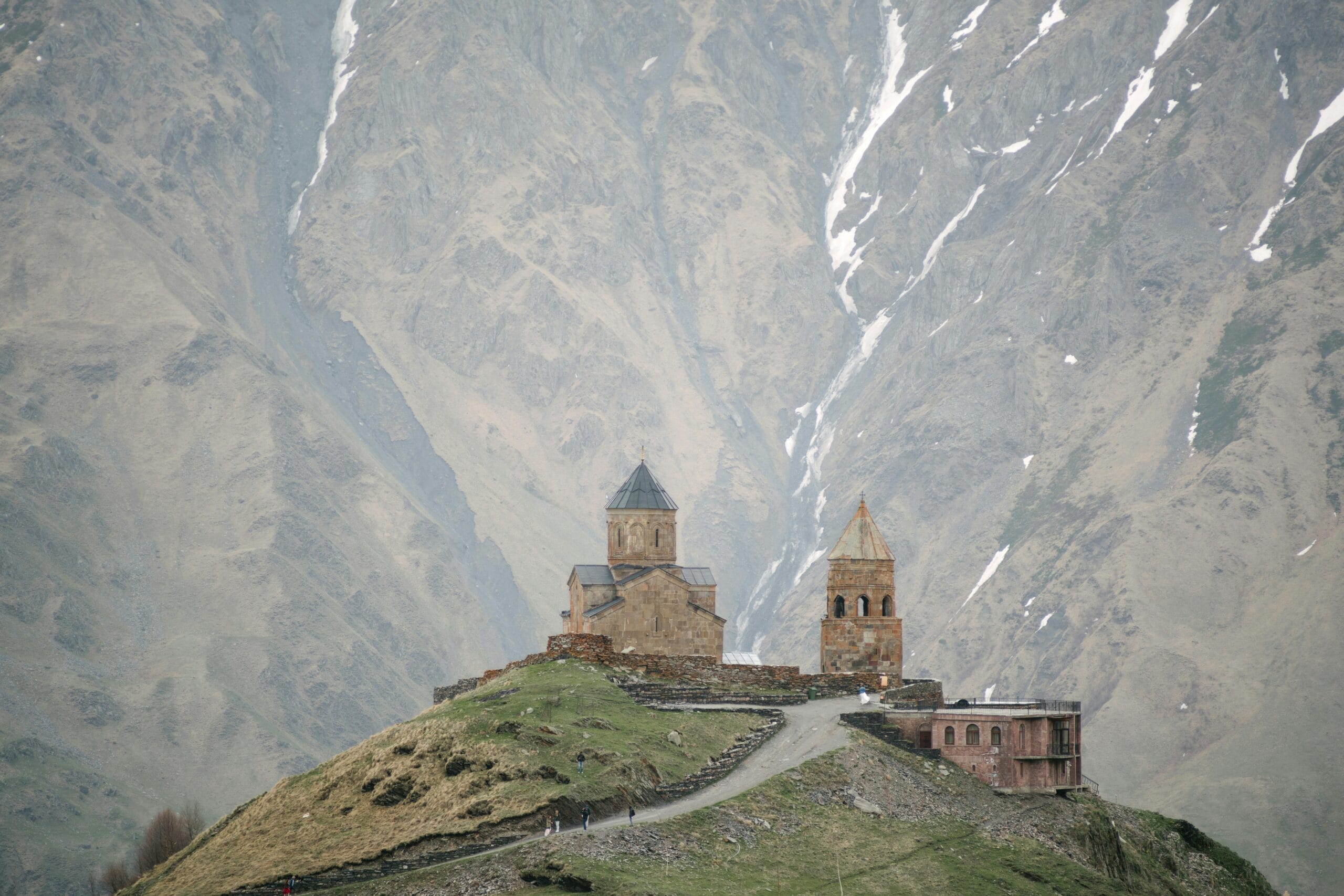

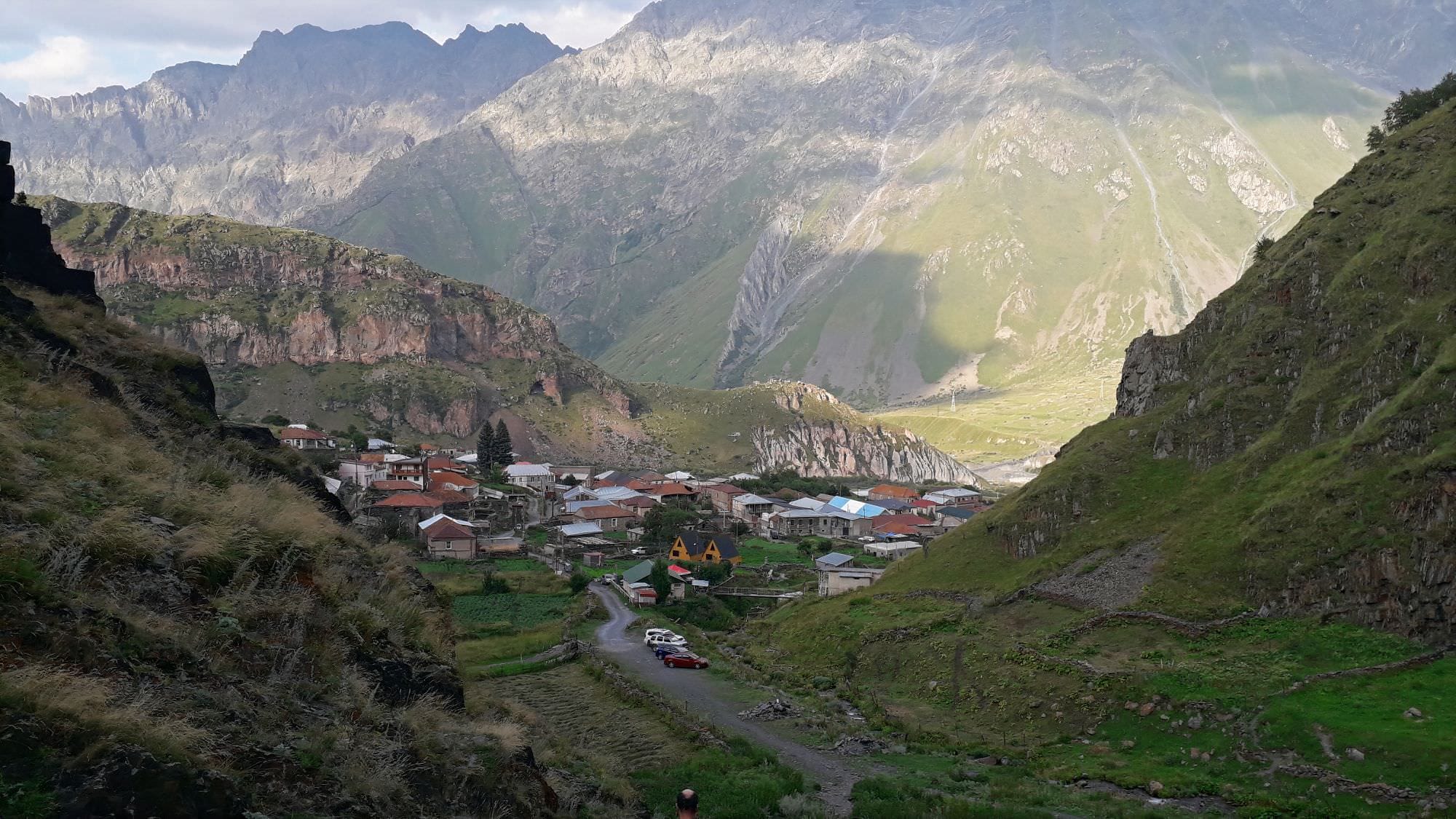



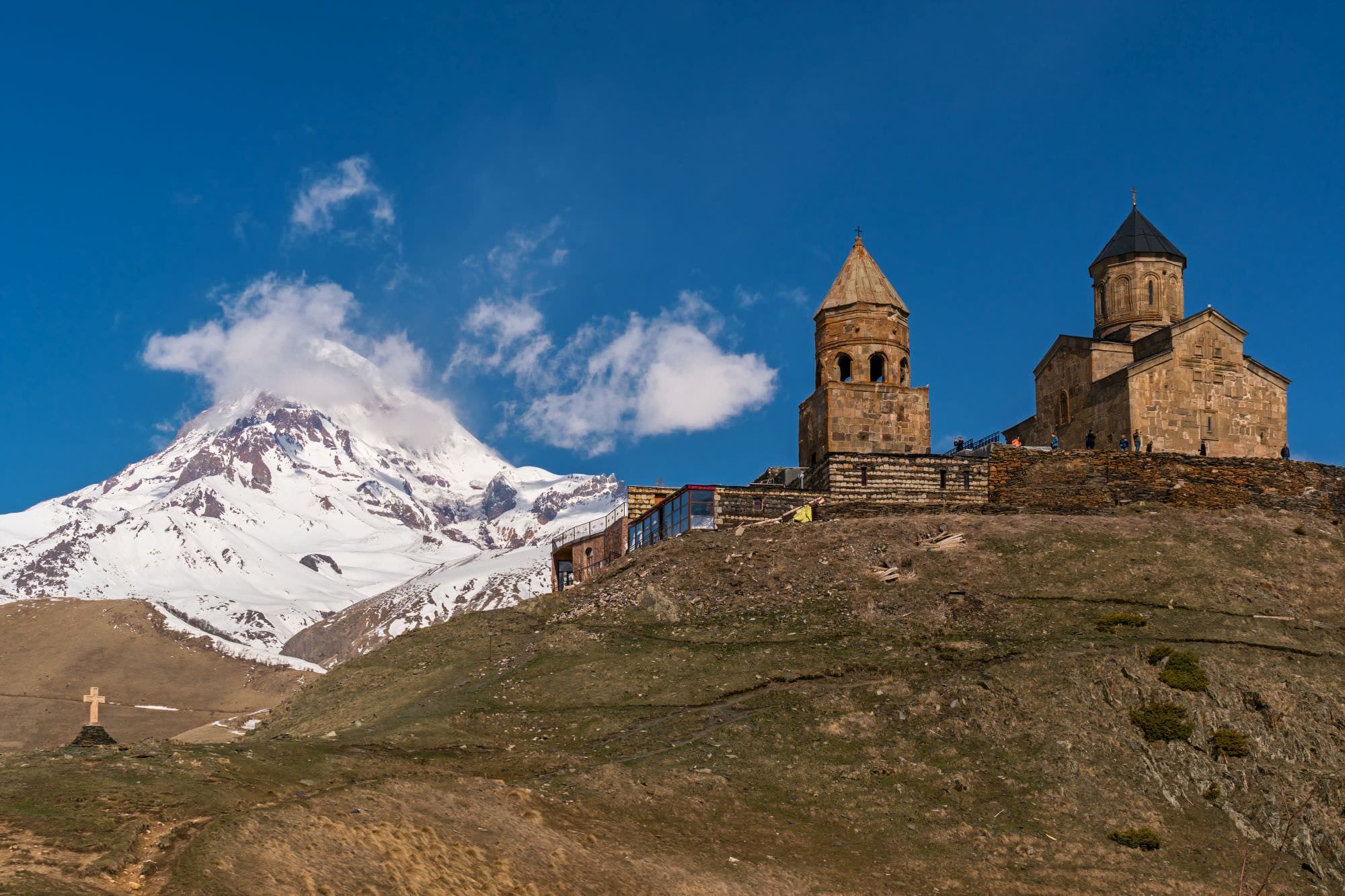
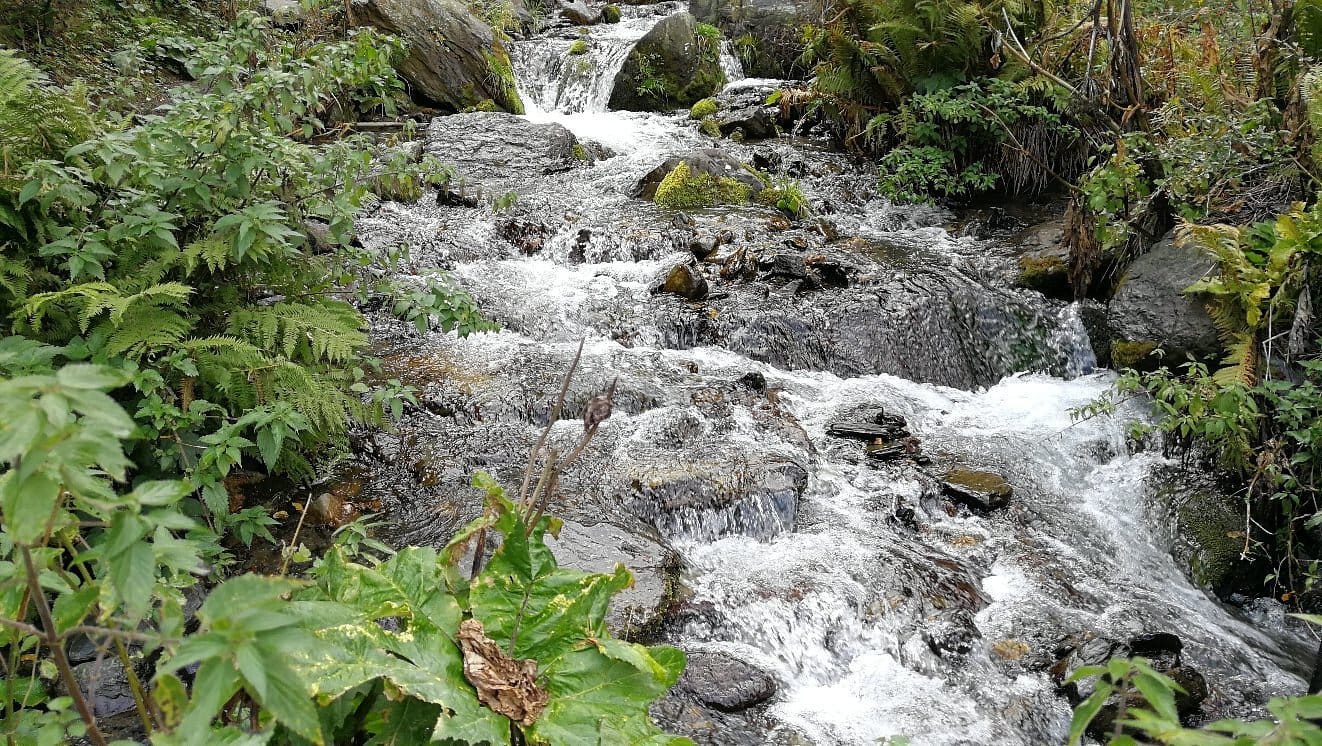
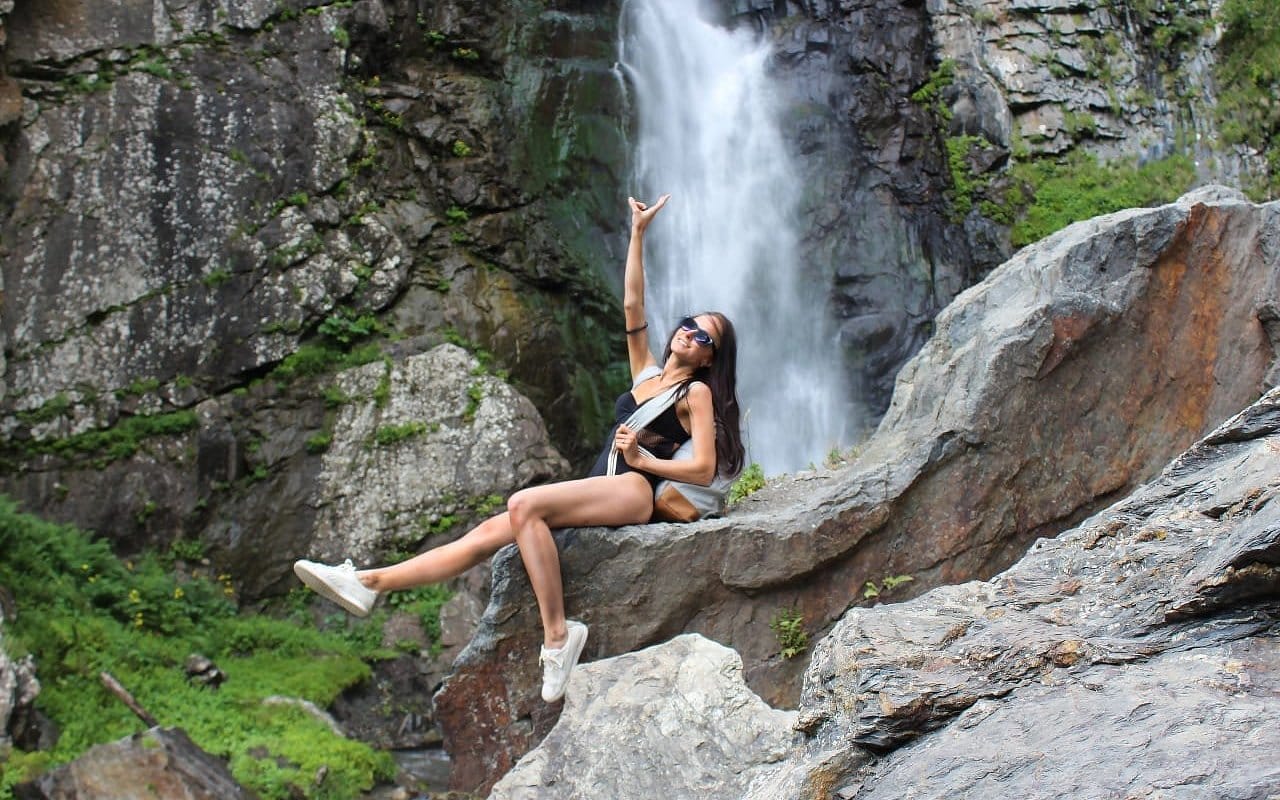
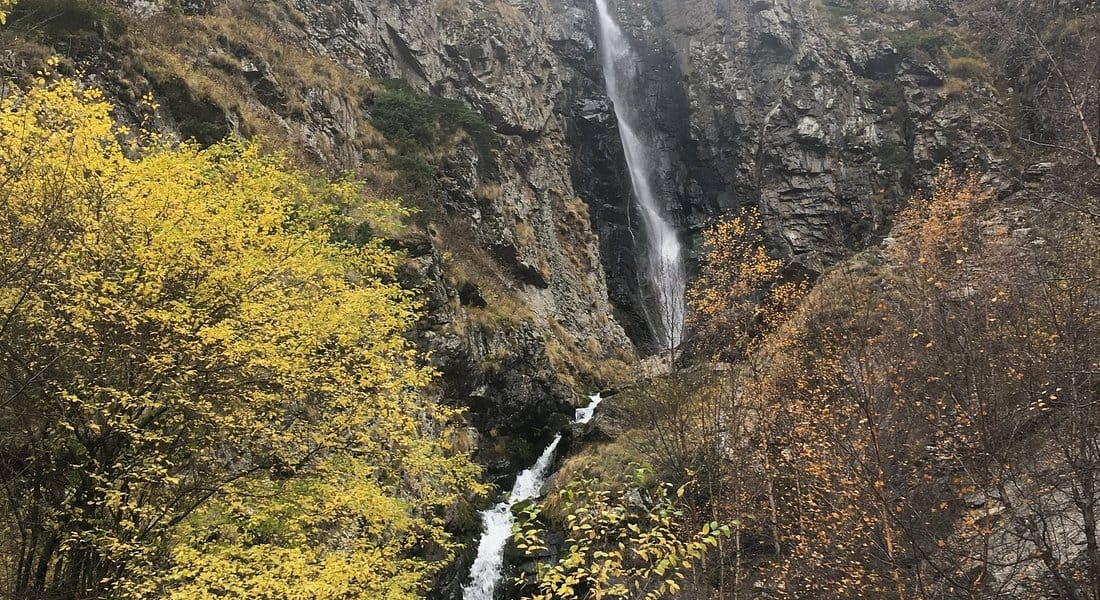
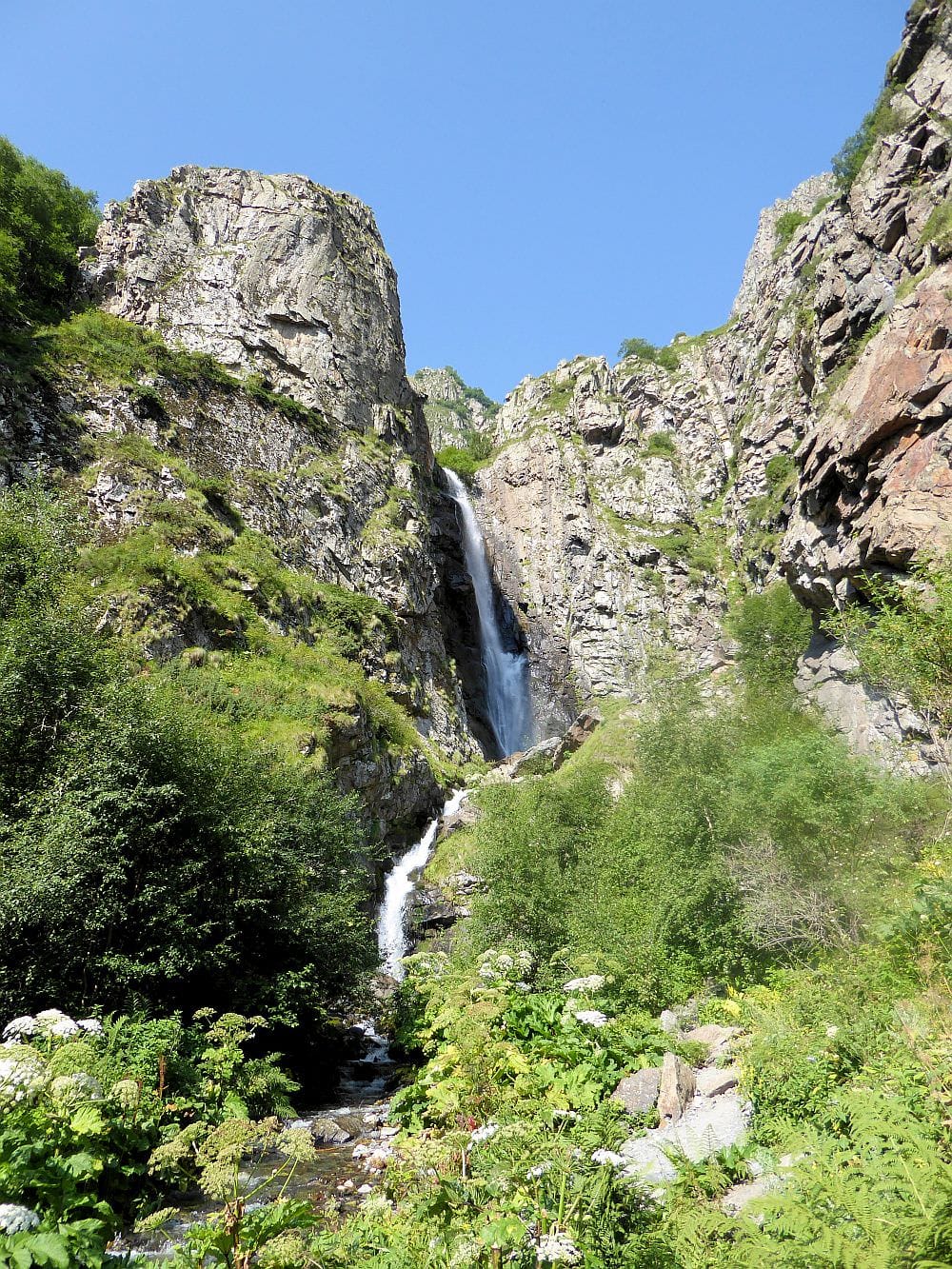
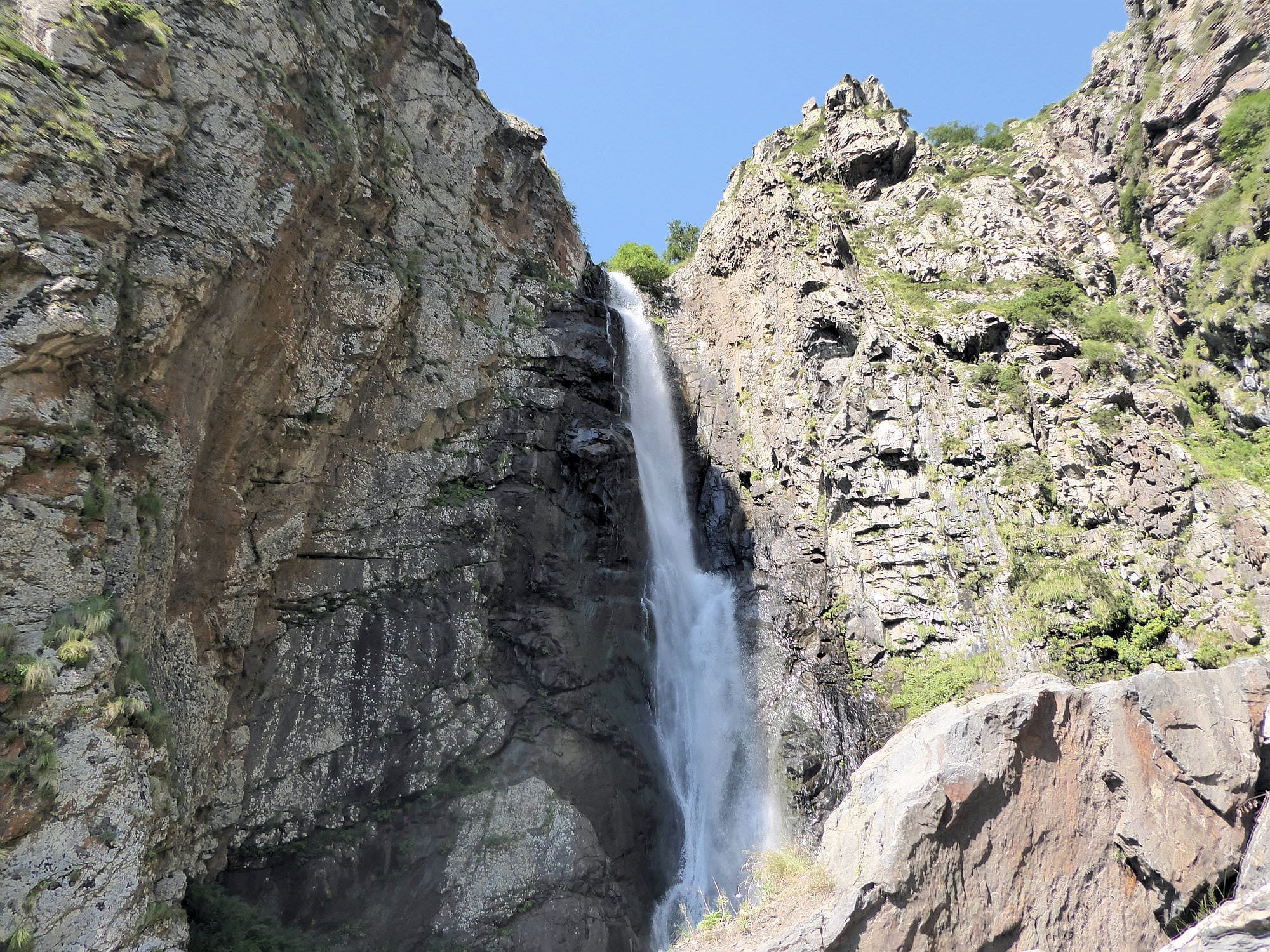

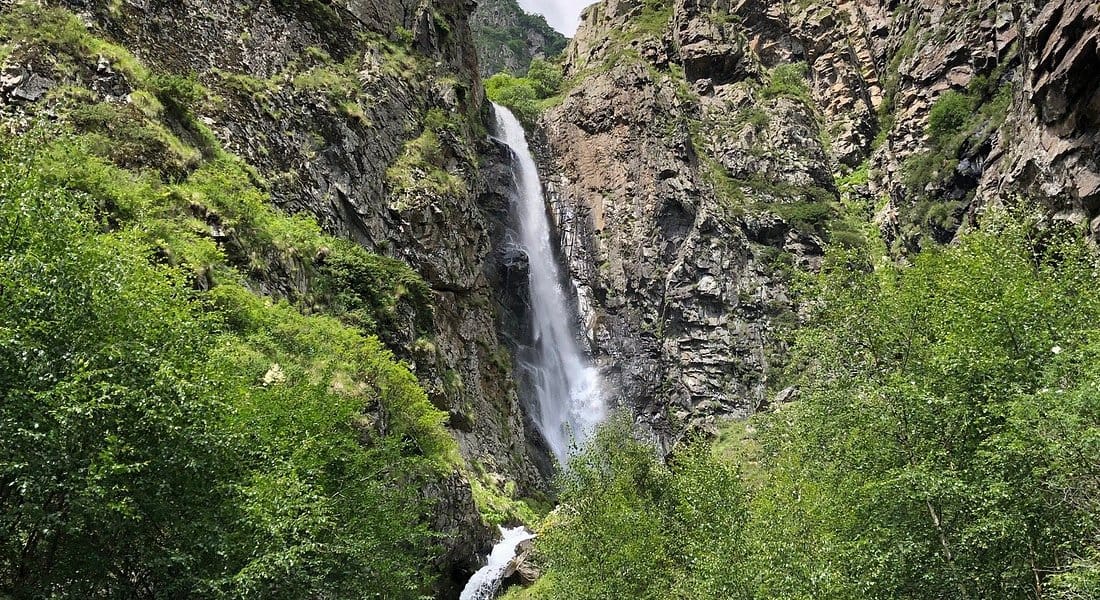
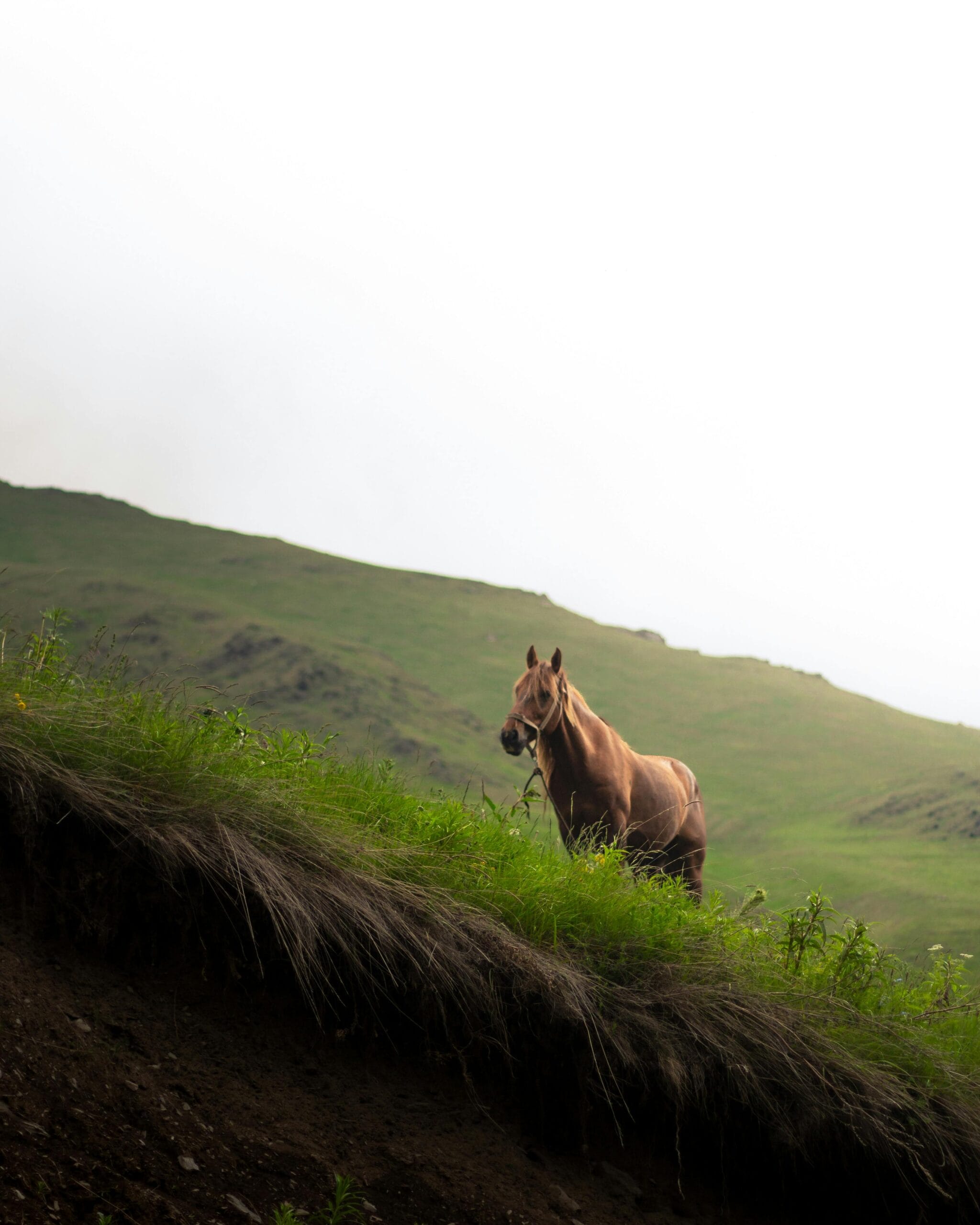

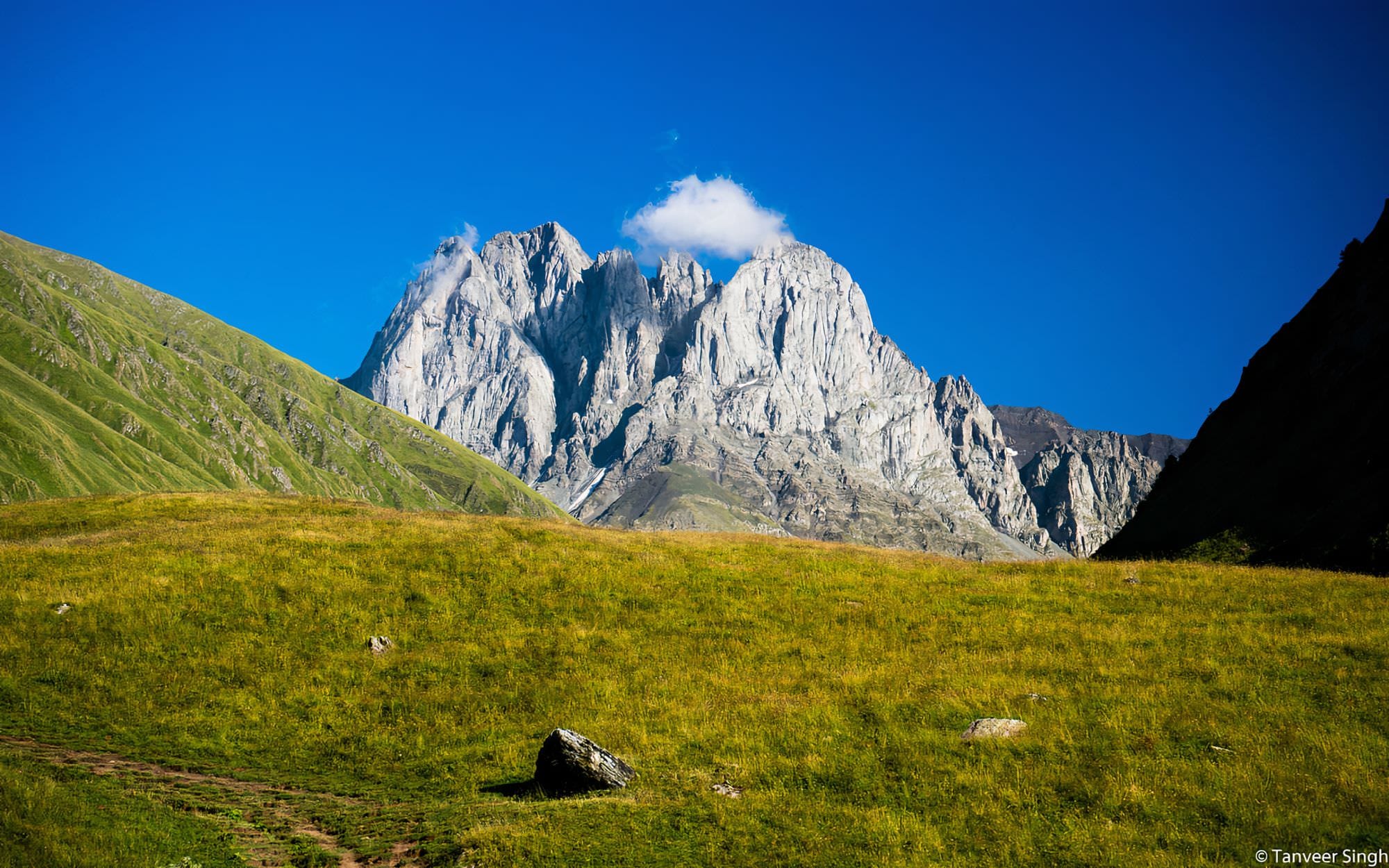




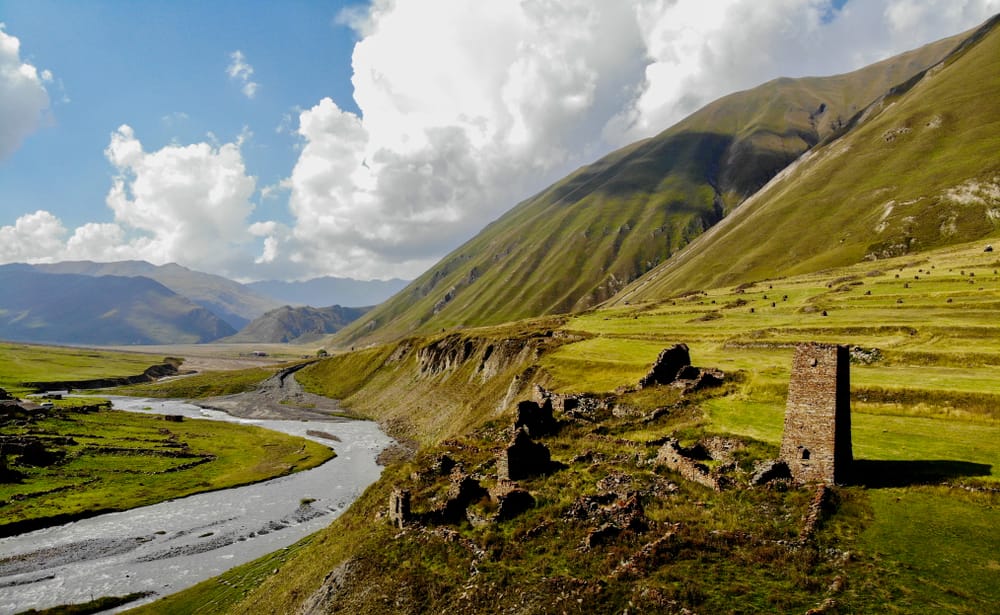
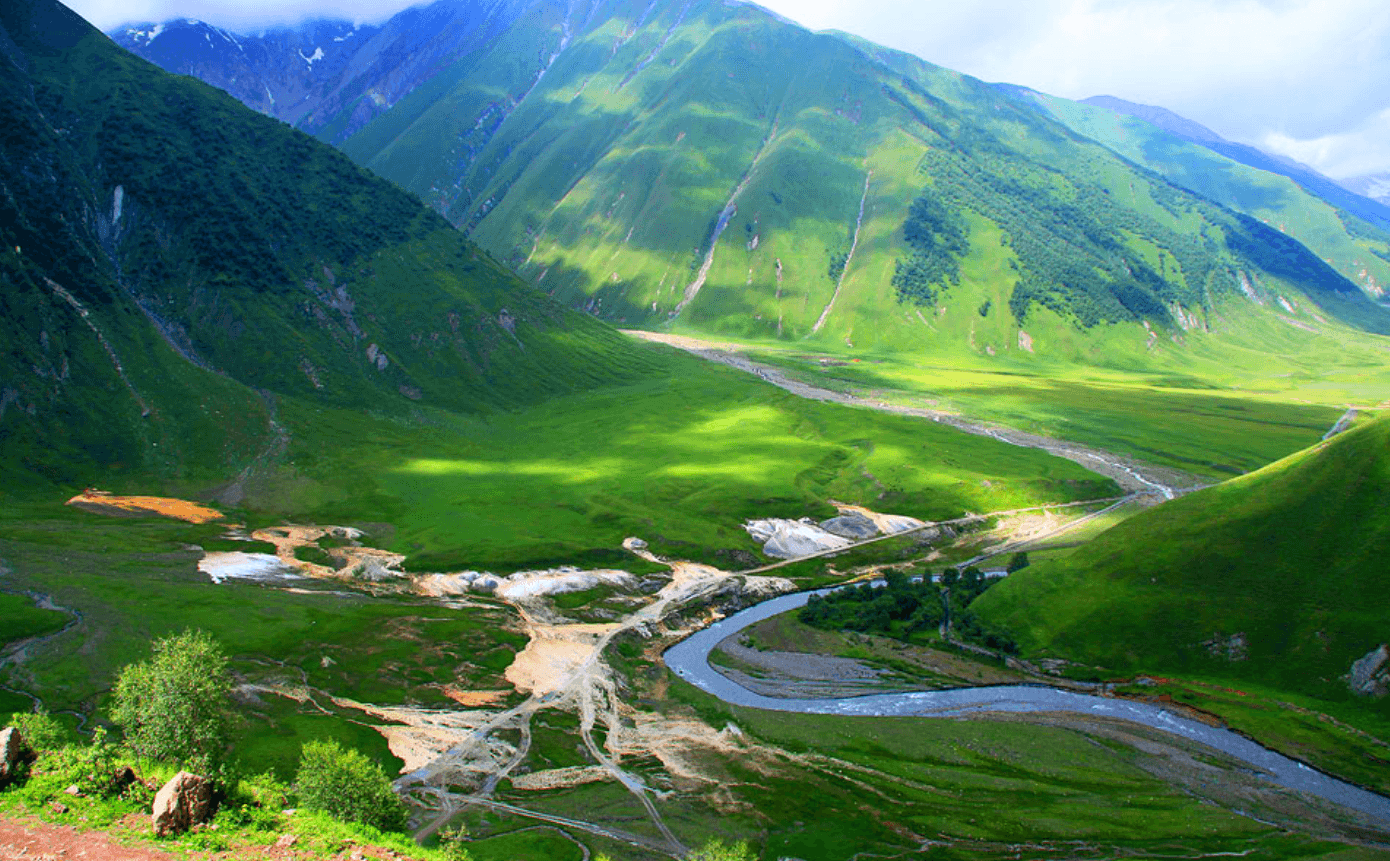
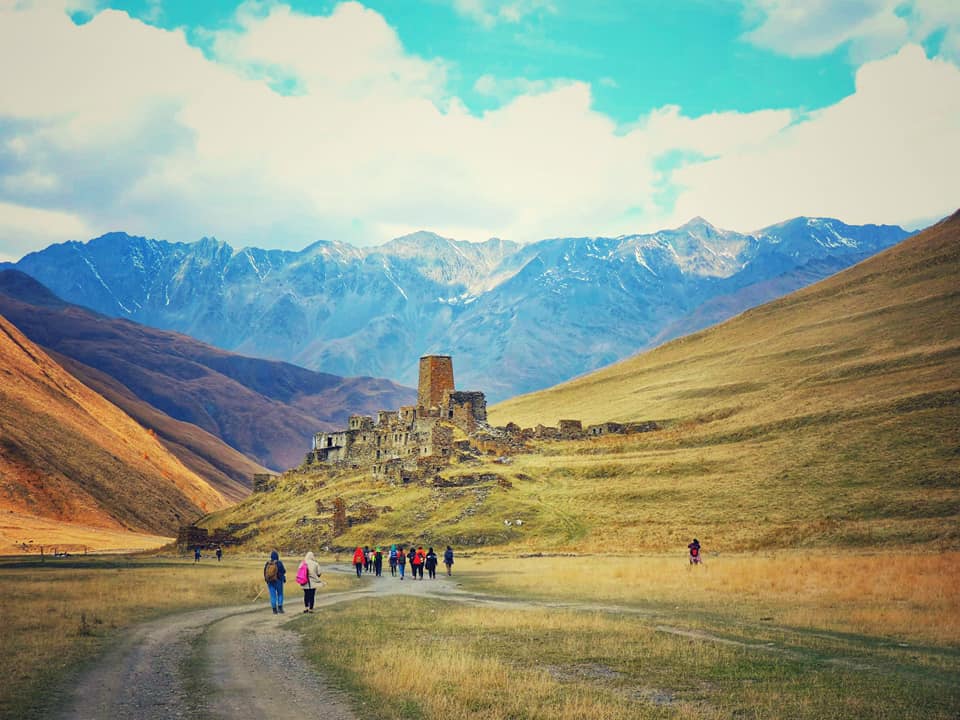

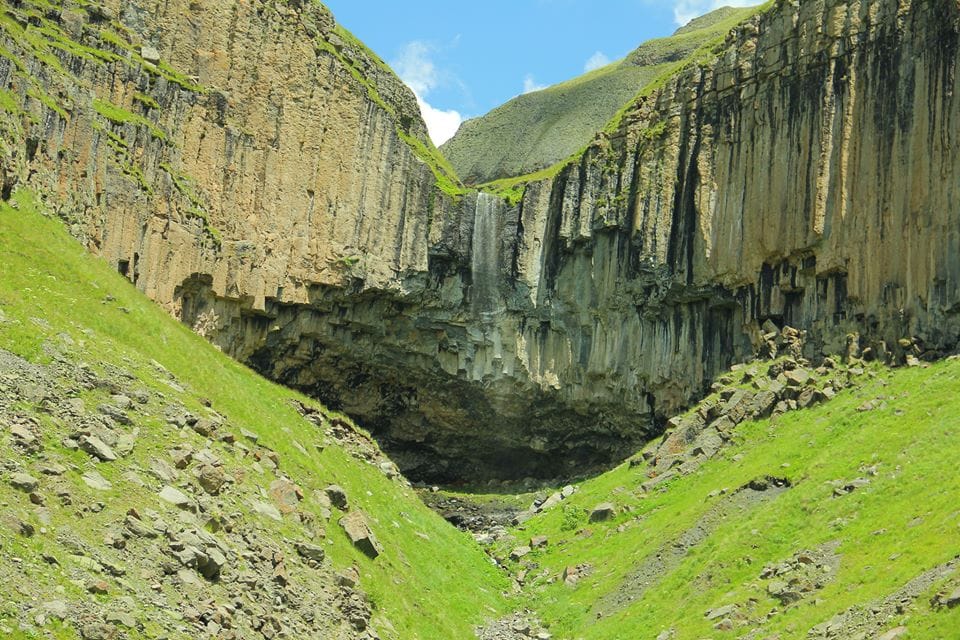
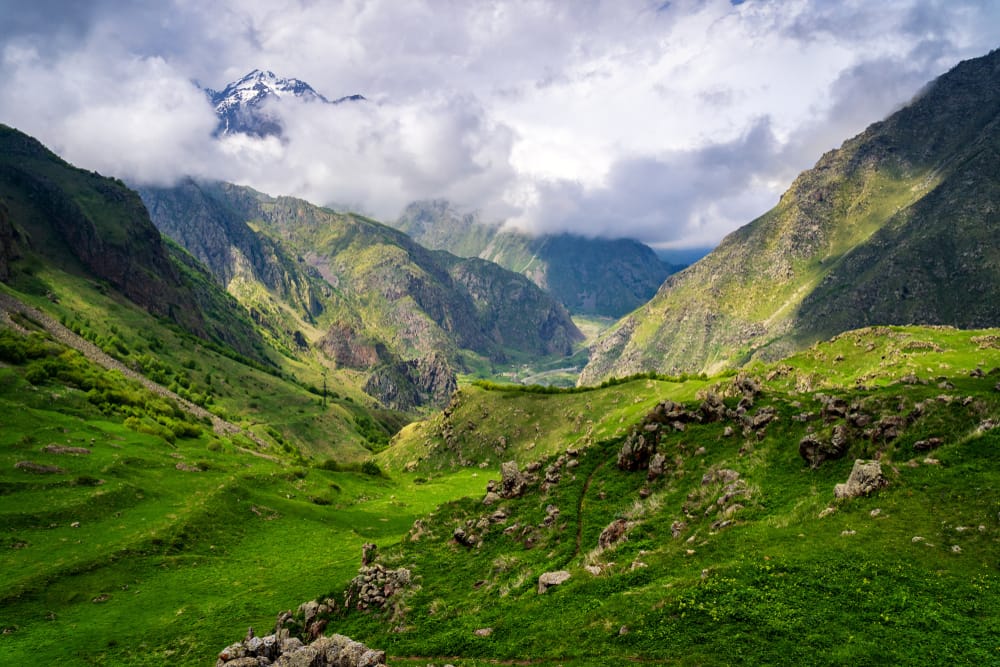
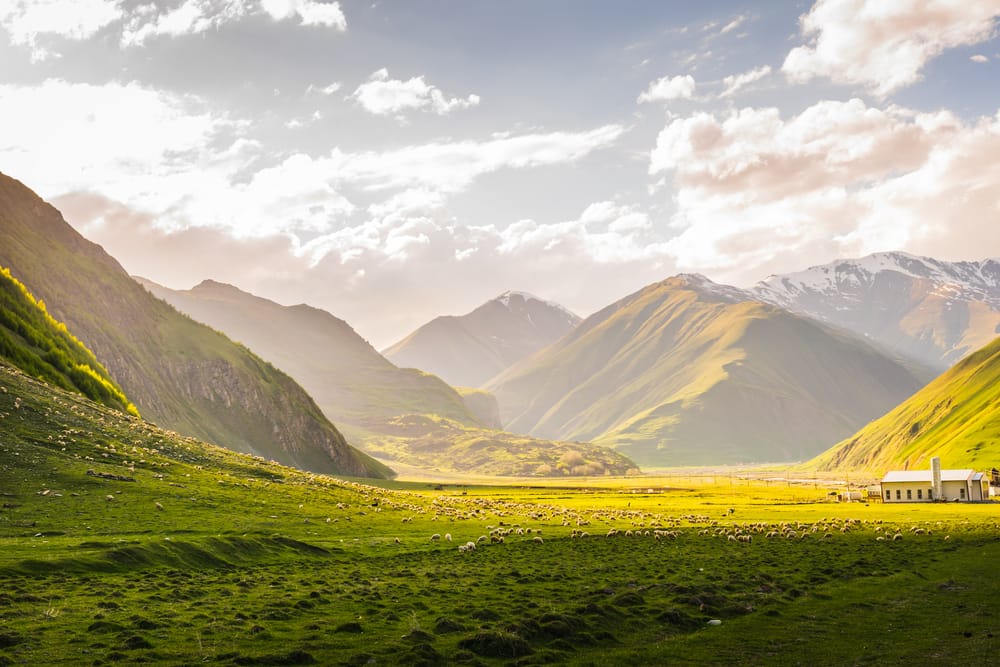




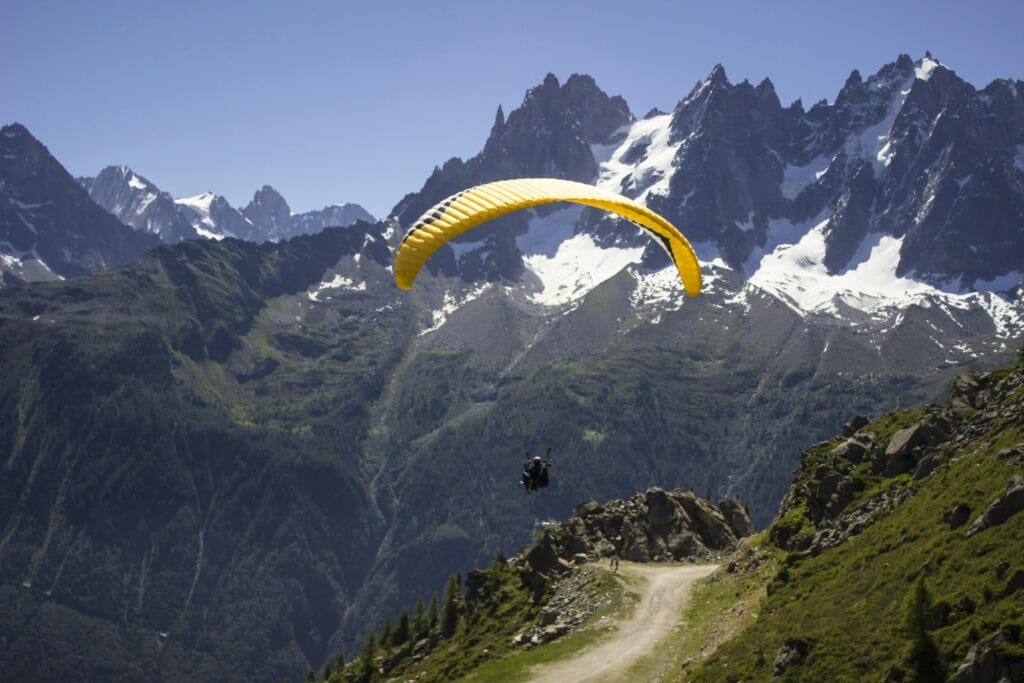
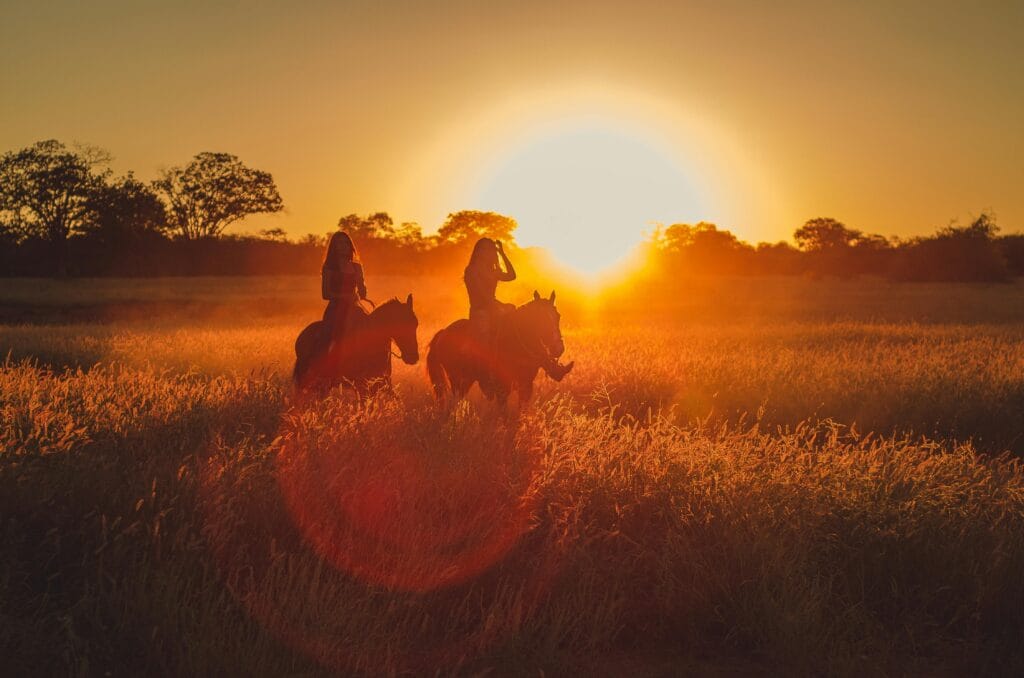
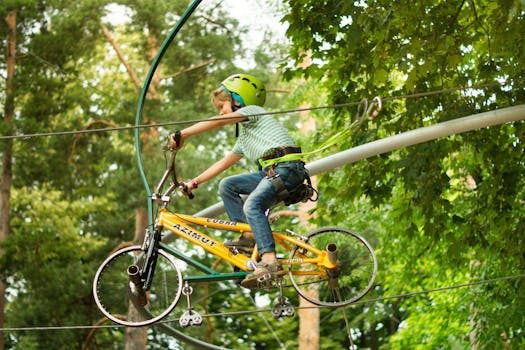
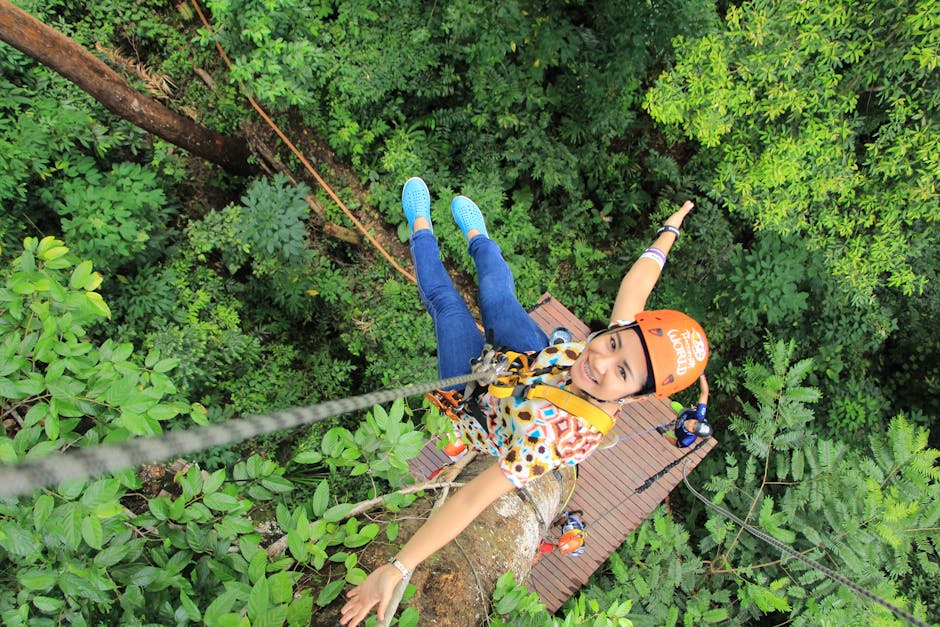
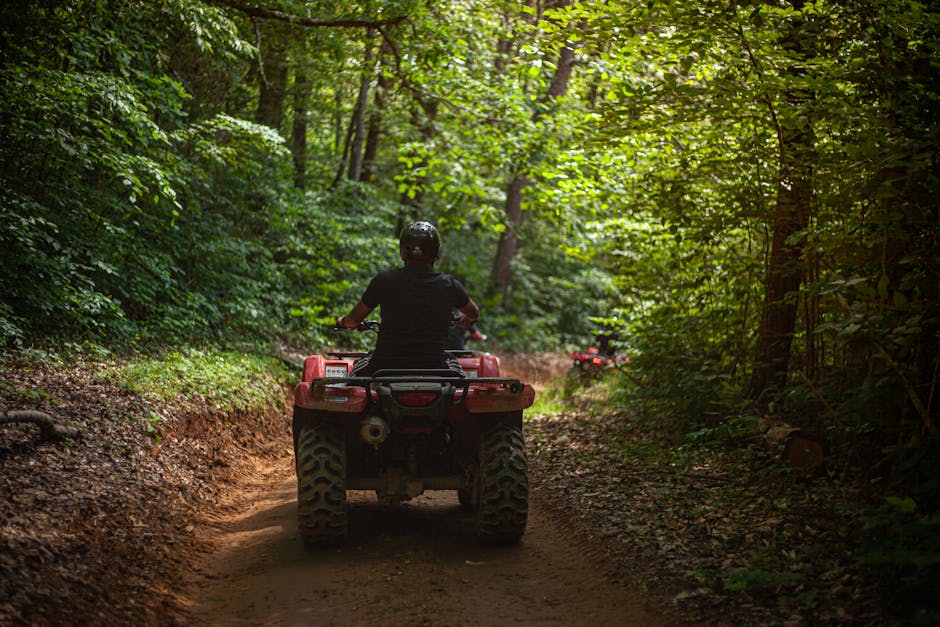
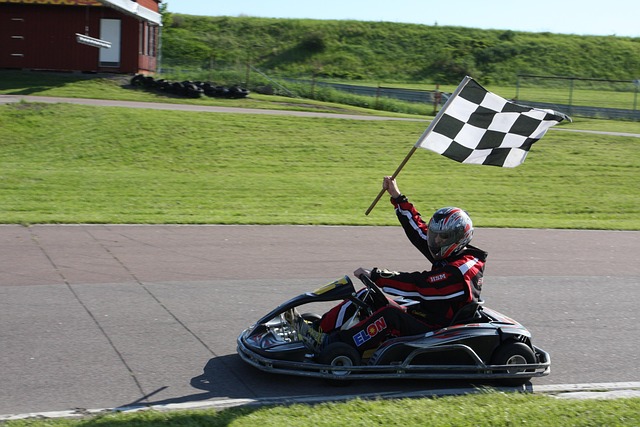
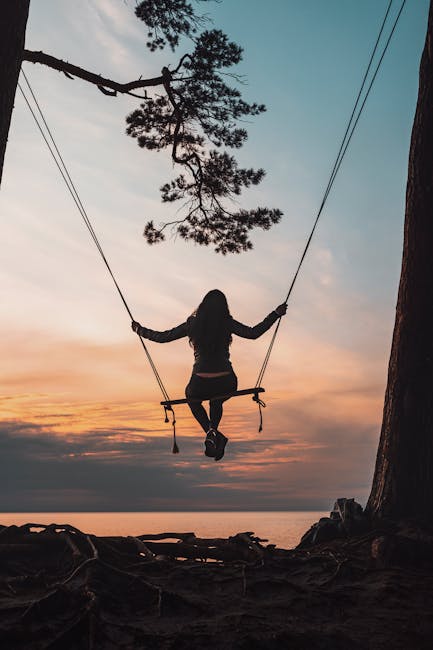
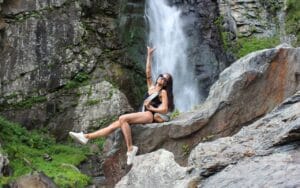
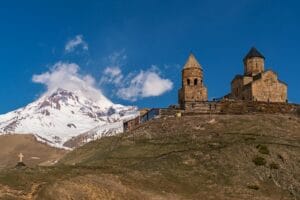
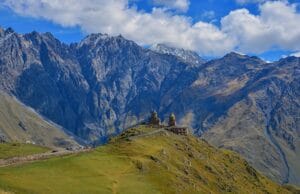
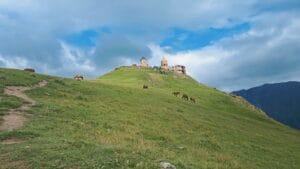
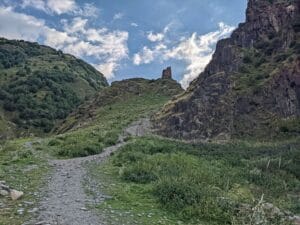
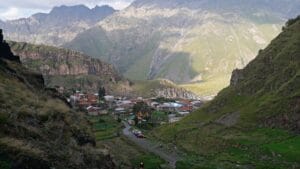
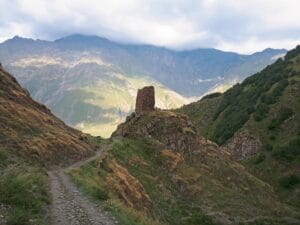
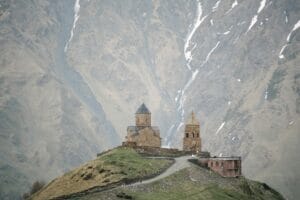
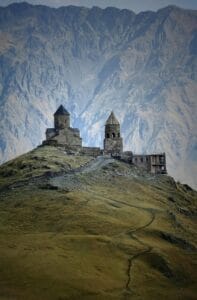
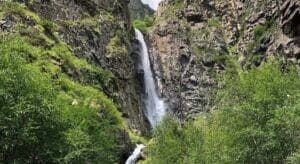
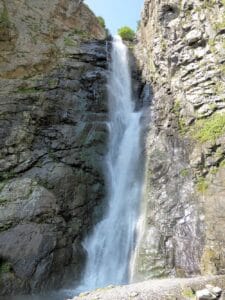
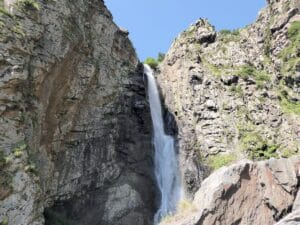
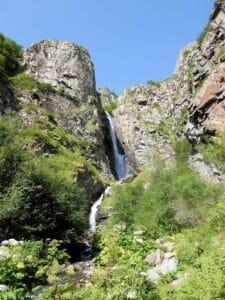
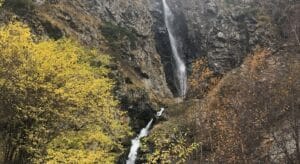
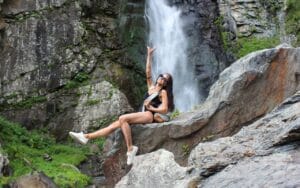
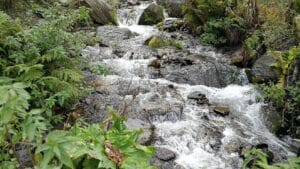
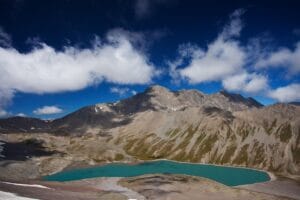
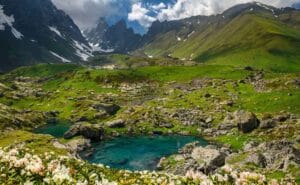
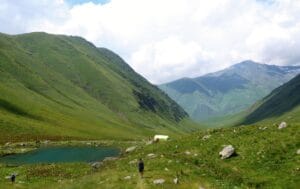
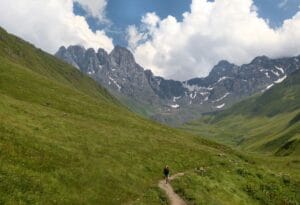
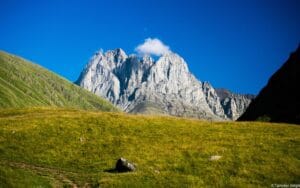

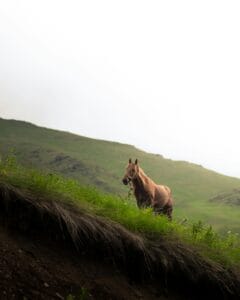
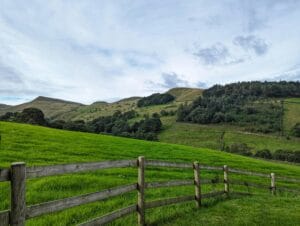
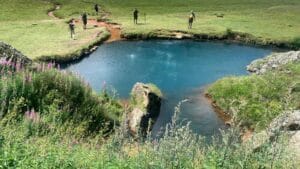
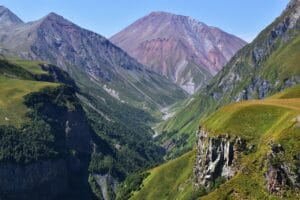
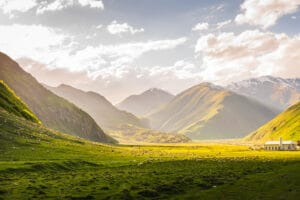

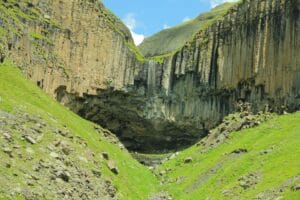
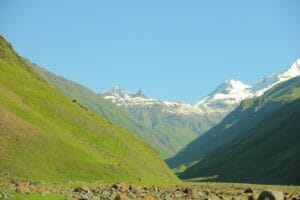
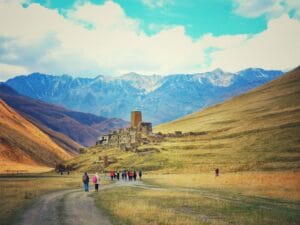
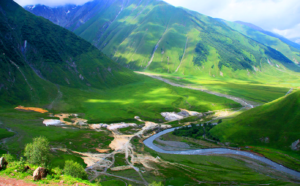
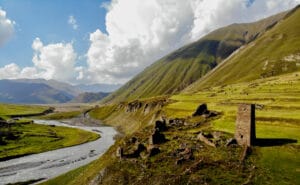
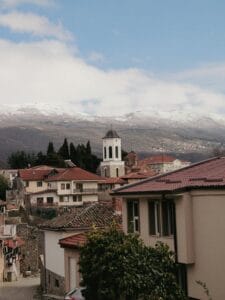
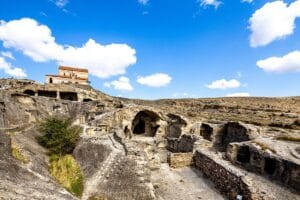
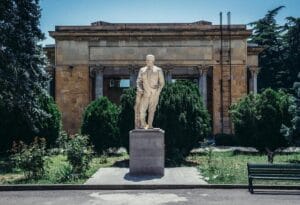
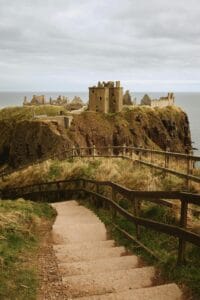
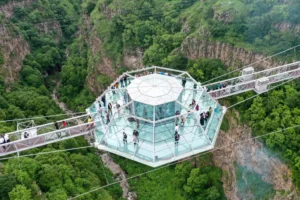
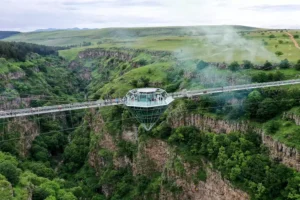
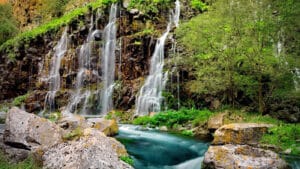
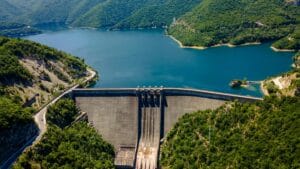

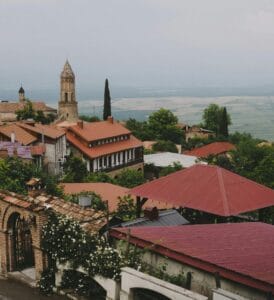
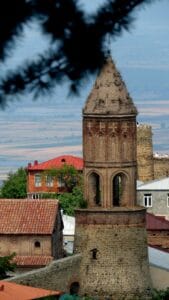
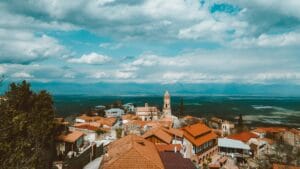
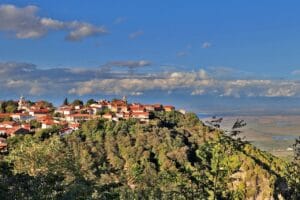
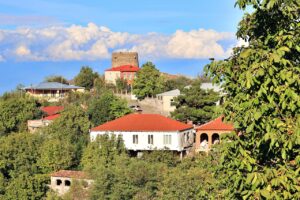
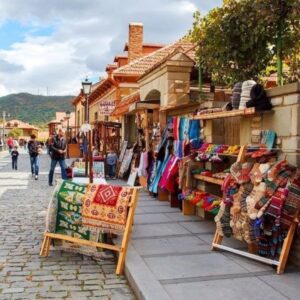
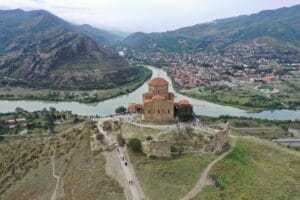
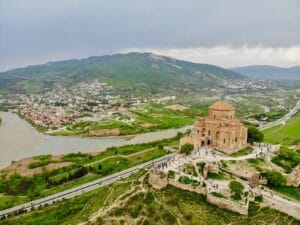
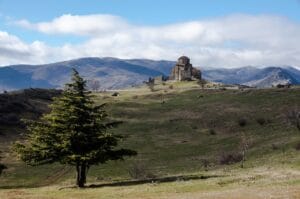
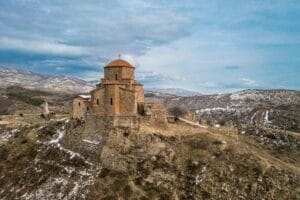
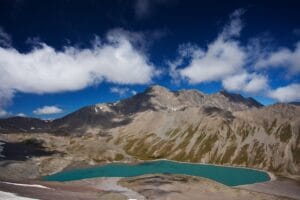
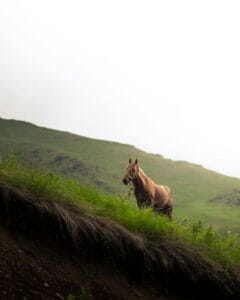
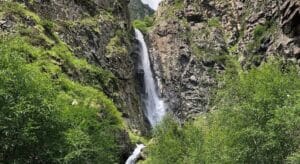
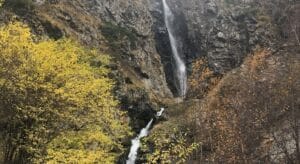
Accommodation & Rooming
7 nights in pre-arranged, comfortable accommodations
Rooms will be shared unless private room upgrade was selected
Meals & Special Requirements
Breakfast included daily
Please inform us by if you have allergies or dietary needs
Transportation & Logistics
Private transportation throughout the trip
Pick-up location & departure time is shared in the direct links above
Please be on time daily for departures to stay on schedule
Media & Social Sharing
Our media team will document the journey (photos & videos)
You’ll receive the content post-trip via a download link
Tag us @lebanon.outdoor.activities on Instagram – collaborate with us on reels or posts!
Reminders & Notes
Respect nature, local communities, and fellow travelers
Keep emergency numbers & your guide’s contact saved
Hydrate often and listen to your body during hikes
Be present, enjoy, disconnect from stress – this is your time to recharge!
Enjoy the music during the bus trip on your Earbuds
Respect the time schedule and trust our event planning skills
Rest assure that you picked the best and most complete package
Stay friendly with the whole group, show us your emotional intelligence
What will the weather be like during our trek?
The best time to trek in Nepal falls during the dry windows of October–November and March–April, which lie just before and after the monsoon season. These months typically offer the most stable weather and comfortable temperatures in the Himalayas. That said, the mountains have a mind of their own—conditions can shift rapidly, with sudden rain or even snow. No need to worry though—if you pack according to our checklist, you’ll be ready for any surprises along the trail!
What about the Visa to Nepal?
Nepal offers a convenient “Visa on Arrival” system for most travelers. The process is quick, easy, and handled directly at the airport—no extra documents are required in advance.
However, citizens of certain countries must obtain a visa prior to arrival through the nearest Nepali embassy or consulate. These countries include: Nigeria, Ghana, Zimbabwe, Swaziland, Cameroon, Somalia, Liberia, Ethiopia, Iraq, Palestine, Afghanistan, Syria, and all travelers holding refugee travel documents.
Visa fees are as follows:
- 15 Days – USD 30
- 30 Days – USD 50
- 90 Days – USD 125
As part of our support, The Sports Guru will send you detailed guidance and an instructional video before your departure to help you smoothly navigate the visa process.
Please note: Entry requirements can change at any time. It is the traveler’s responsibility to verify the latest regulations based on their nationality. The Sports Guru cannot be held responsible for visa denials or travel interruptions due to incomplete or incorrect documentation.
Who Can Join This Trek?
First-time Trekkers with Basic Prep: If you’re in decent shape and can train for a couple of months, you can successfully complete this trek—even without prior altitude experience.
Outdoor Lovers & Hikers: Those used to long walks and nature trails will adapt quickly.
Generally Healthy Individuals: If you have no major issues with your heart, lungs, or mobility, you’re good to go.
Mentally Determined: Your mindset matters—staying positive and resilient plays a big role.
Who Might Face Challenges?
- People with Serious Joint/Knee Pain: The trek includes many stair sections that can be tough on joints.
- Those with Breathing Difficulties at Altitude: If you have known respiratory conditions, this might not be suitable.
- Anyone Unable to Hike 5–7 Hours Daily: Multi-day endurance is key—be honest about your fitness level.
With the right preparation and attitude, ABC can be a life-changing and reachable goal.
Do I have to worry about altitude sickness on the ABC Trek?
Altitude sickness can occur on the Annapurna Base Camp trek, but it’s generally mild and manageable.
The highest elevation you’ll reach is 4,130m (13,550 ft) at Annapurna Base Camp. While this isn’t considered extreme altitude (which starts above 5,000m), some trekkers may still feel the effects of Acute Mountain Sickness (AMS), especially once above 3,500m.
Common mild symptoms include:
- Light headache
- Dizziness
- Nausea or reduced appetite
- Fatigue
- Trouble sleeping
These symptoms are typically short-lived and tend to fade as your body acclimatizes. With proper pacing, hydration, and rest, most trekkers complete the trek without serious issues. Severe conditions like HAPE (fluid in lungs) or HACE (brain swelling) are extremely rare on this route.
Where will we sleep during the trek?
During the Annapurna Base Camp trek, we’ll be staying in traditional tea houses—simple mountain lodges found along the trail. While not luxurious, they offer a cozy place to relax and recharge after a full day of trekking.
Rooms are typically shared (twin or dorm-style) and come with basic bedding—blankets and pillows. As we climb higher, accommodations become more limited, so room sharing becomes more common.
Bathrooms are shared and range from Western-style toilets to basic squat types. In some places, you may encounter only a simple pit toilet. Hot showers are available in many tea houses but can’t be guaranteed at all stops, especially at higher altitudes.
The dining room is the warmest spot in the tea house, usually heated with an electric or wood stove. Bedrooms are not heated, but don’t worry—we’ll provide you with warm sleeping bags to keep you comfortable through the cold nights.
*LOA reserves the right to change or cancel any of the activities during the trip in case of unforeseen circumstances.


